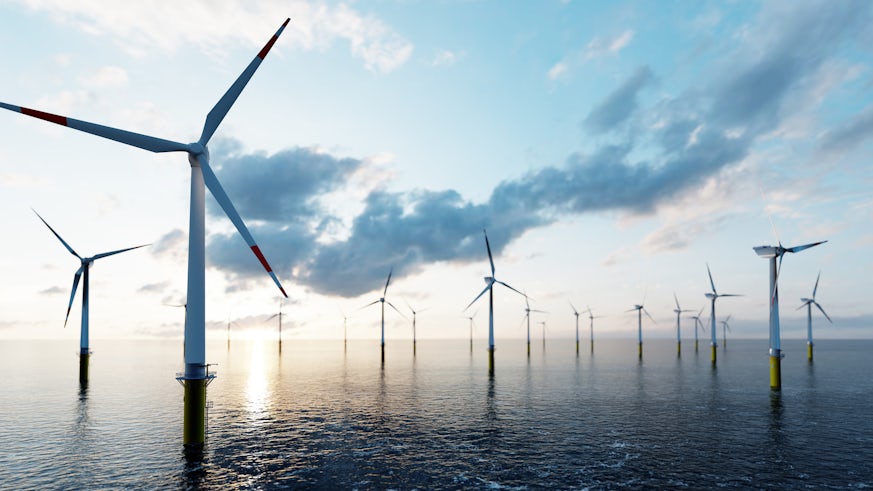Harnessing the oceans for energy
23 July 2021

An innovative £10m research project will investigate the potential of harnessing offshore wind and marine renewable energy to produce zero carbon hydrogen and ammonia fuels.
Scientists at Cardiff University will take part in the multi-disciplinary Ocean-REFuel: Ocean Renewable Energy Fuels project, which will explore ways of converting ocean energy into fuels for use in heating, energy storage and difficult to decarbonise transport applications.
The consortium, led by the University of Strathclyde, also includes world-leading research teams from the Universities of Nottingham, Newcastle and Imperial College London. The project is funded by the Engineering and Physical Sciences Research Council, industry, and the partner universities, who have also pledged nine linked PhD studentships.
The UK government has the ambition for offshore wind to produce more than enough electricity to power every home in the country by 2030, based on current electricity usage, but there remains extremely large ocean energy potential which can never be fully utilised by the electricity network.
Renewable electricity has been a remarkable success over the past 20 years but the same cannot be said for other energy uses in particular heat, heavy transport vehicles and aviation.
New technologies and systems need to be developed to avert the worst consequences of climate change and the Ocean-REFuel project will directly address challenges associated with energy storage, renewable heat and the decarbonisation of transport such as road, marine and aviation.
Dr Agustin Valera-Medina, from Cardiff University’s School of Engineering, said: “This is an exciting opportunity to demonstrate a great variety of technologies to decarbonise our economy. The ambitious research will untap novel technologies to efficiently recover energy from offshore locations, and will set the foundations to show that ammonia, an essential molecule to our development plans, can be efficiently used as a hydrogen vector to bring down carbon emissions to tackle climate change”.
Renewable energy technologies like wind only produce energy when the wind is blowing and the project will explore storage solutions, such as hydrogen and ammonia, that can help manage the issue of intermittent supply.
Ammonia, a compound commonly used as a fertilizer, has recently shown much promise as a fuel as it can be burnt in an engine or used in a fuel cell to produce electricity.
Ammonia does not produce carbon dioxide when it is burned, can be created using energy from renewable sources and can easily be stored as a bulk liquid.
Cardiff University researchers are leading the way in terms of using ammonia as a source of carbon-free energy, having already created the world’s first demonstrator in which ammonia is created from renewable electricity, stored in a tank, and then used to generate even more electricity.
As well as releasing energy from ammonia in an internal combustion or gas turbine engine, the compound can also be ‘cracked’ back into nitrogen and hydrogen, thus freeing up hydrogen as another fuel source.
Hydrogen is a clean fuel that, when consumed in a fuel cell, produces only water, which makes it an attractive fuel option for transportation and electricity generation applications, such as in cars, houses and portable power.
As part of the project, academics from the School of Social Sciences will also study the public perceptions of ammonia, due to its potential toxic nature and the eventual need to transport it through communities.
The five-year collaboration, which involves 28 industrial partners, including BP, Scottish Power the National Grid and ENI – Italy’s former national oil company, will also produce a Blueprint for the first integrated Ocean Renewable Fuel production facility.
